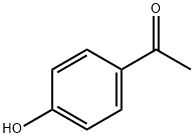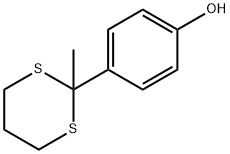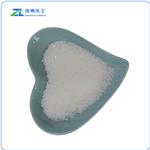Chemical Properties
almost white to beige crystalline powder
Chemical Properties
White to beige powder; sweet, hawthorn, balsam, mimosa aroma
Occurrence
Reported found in cloudberry, coffee, cranberry, mango, sherry, and wort.
Uses
p-Hydroxyacetophenone is widely used in medicine, cosmetics and industrial fields. It is a natural plant extract, which naturally exists in the stems and leaves of the Compositae plant, Artemisia annua, the roots of plants such as Artemisia annua, Rhododendron, and Panax ginseng. It has a good effect on yellow eyes caused by diseases such as hepatitis, and also has a good auxiliary effect on yellow eyes caused by various reasons. Due to its weak molecular activity, high temperature resistance, melting point of 95-97 °C and boiling point of 296 °C, it is widely used in various liquid pharmaceuticals and can prolong the shelf life of other active ingredients under high temperature conditions. It has no harm to human skin and is the safest high-temperature auxiliary active stabilizer in the pharmaceutical industry.
Uses
4?-Hydroxyacetophenone has been used as ketone component in the preparation of 1-aryl-3-phenethylamino-1-propanone hydrochlorides, potential cytotoxic agents, via Mannich reactions.
Uses
4′-Hydroxyacetophenone has been used as ketone component in the preparation of 1-aryl-3-phenethylamino-1-propanone hydrochlorides, potential cytotoxic agents, via Mannich reactions.
Application
4'-Hydroxyacetophenone has been suggested for use in
perfume compositions as a modifier for the
more conventional derivatives of Acetophenonc, etc. mainly in heavy-floral or woodyfloral fragrances where power and low cost
arc requested.
Production Methods
4'-Hydroxyacetophenone can be produced 1) from Phenylacetate by heating with Aluminum chloride.
2) from Phenol, Acetylchlonde and Aluminum chloride by Friedel-Craft' reaction.
Preparation
Preparation by Fries rearrangement of phenyl acetate with Lewis acids
aluminium chloride
in nitrobenzene at 20–25° or at 50–60°
in chlorobenzene between 45° and 65°, sealed tube and subjected to high power microwave irradiation for 2 min only (36%)
in nitroethane at 60° (44%)
in carbon disulfide at 45° (40%)
in petroleum ether at 50° (20%)
but between 130° and 175° (40–60%)
aluminium chloride–sodium chloride mixture at 240–250° (10%)
boron trifluoride at 90° (56%)
scandium tris(trifluoromethanesulfonate), in nitromethane, at 50° (39%)
titanium tetrachloride at 90–100° (34%)
ferric chloride at 65° (25%)
zinc chloride at 125° (8%)
hydrofluoric acid, between 20° and 100° (94%)
polyphosphoric acid, between 20° and 100° (69%) (50–53%)(44%)
Nafion-XR 500, sulfonic acid type at 100°
ZSM-5, in sulfolane, at 180° (28%)
H-ZSM-5 at 400° or at 210° (6%)
H-Nu-2 at 170° (15%)
HY (Si/Al = 3) or fluorided alumina (Al2O3-F; 3 % wt. F), at 400°.
Definition
ChEBI: A monohydroxyacetophenone carrying a hydroxy substituent at position 4'.
Aroma threshold values
Floral type, medium strength odor; recommend smelling in a 10.00% solution or less.
General Description
Pharmaceutical secondary standards for application in quality control provide pharma laboratories and manufacturers with a convenient and cost-effective alternative to the preparation of in-house working standards
Flammability and Explosibility
Non flammable
Purification Methods
Crystallise it from diethyl ether, aqueous EtOH or *benzene/pet ether. [Beilstein 8 H 87, 8 IV 339.]





